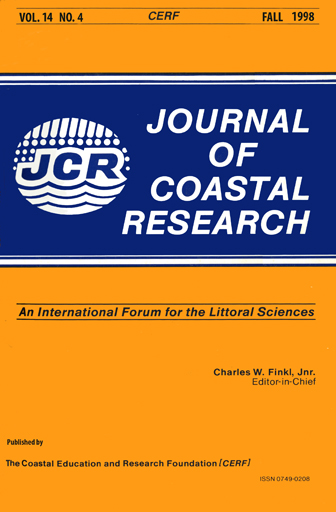Mudbanks of the Southwest Coast of India. VI: Suspended Sediment Profiles
Keywords:
Cohesive sediment, Fluid mud, Kerala, lutocline, monsoon, rheology, sediment entrainment, sediment resuspension, sediment settling, wave damping, wave-mud interactionAbstract
Physical factors influencing suspended fine sediment loads in the region of mudbanks off Alleppey on the southwest coast of India are examined. Sediment dynamics of mudbanks is known to be predominantly governed by waves, and suspended sediment concentration in this area is closely correlated to local entrainment and settling fluxes due to waves, which at times are modulated by effects of weak currents. A simple, semi-empirical model that accounts for the vertical fluxes of fine, cohesive sediment in water and across the water-fluid mud interface due to waves and a weak current has been formulated to simulate suspension concentration profiles. The model is initially tested against laboratory flume data on wave-induced entrainment of muds, which shows the importance of mud rheology in governing resuspension. The model is then used to simulate suspended sediment concentration profiles measured near the Alleppey Pier under monsoonal waves that create mudbanks close to shoreline. Profiles are generated to represent five documented stages of mudbank evolution from formation to dissipation. Because the field data are very sparse in terms of spatial and temporal coverage, only a limited comparison of model and field is achieved. In spite of this limitation, the exercise shows that it should be possible to obtain reasonably reliable site-specific results on predicted profiles of suspended sediment over mudbanks, provided adequate field data are available for selecting representative values of the empirical parameters for calibration of the model.


